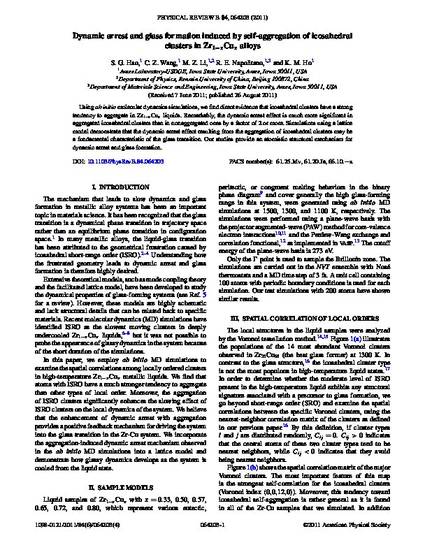
Article
Dynamic arrest and glass formation induced by self-aggregation of icosahedral clusters in Zr1−xCux alloys
Physical Review B
Document Type
Article
Disciplines
Publication Date
8-26-2011
DOI
0.1103/PhysRevB.84.064203
Abstract
Using ab initio molecular dynamics simulations, we find direct evidence that icosahedral clusters have a strong tendency to aggregate in Zr1−xCux liquids. Remarkably, the dynamic arrest effect is much more significant in aggregated icosahedral clusters than in nonaggregated ones by a factor of 2 or more. Simulations using a lattice model demonstrate that the dynamic arrest effect resulting from the aggregation of icosahedral clusters may be a fundamental characteristic of the glass transition. Our studies provide an atomistic structural mechanism for dynamic arrest and glass formation.
Copyright Owner
American Physical Society
Copyright Date
2011
Language
en
File Format
application/pdf
Citation Information
S. G. Hao, Cai-Zhuang Wang, M. Z. Li, Ralph E. Napolitano, et al.. "Dynamic arrest and glass formation induced by self-aggregation of icosahedral clusters in Zr1−xCux alloys" Physical Review B Vol. 84 (2011) p. 064203 Available at: http://works.bepress.com/ralph_napolitano/4/

This article is from Physical Review B 84 (2011): 064203, doi:10.1103/PhysRevB.84.064203. Posted with permission.